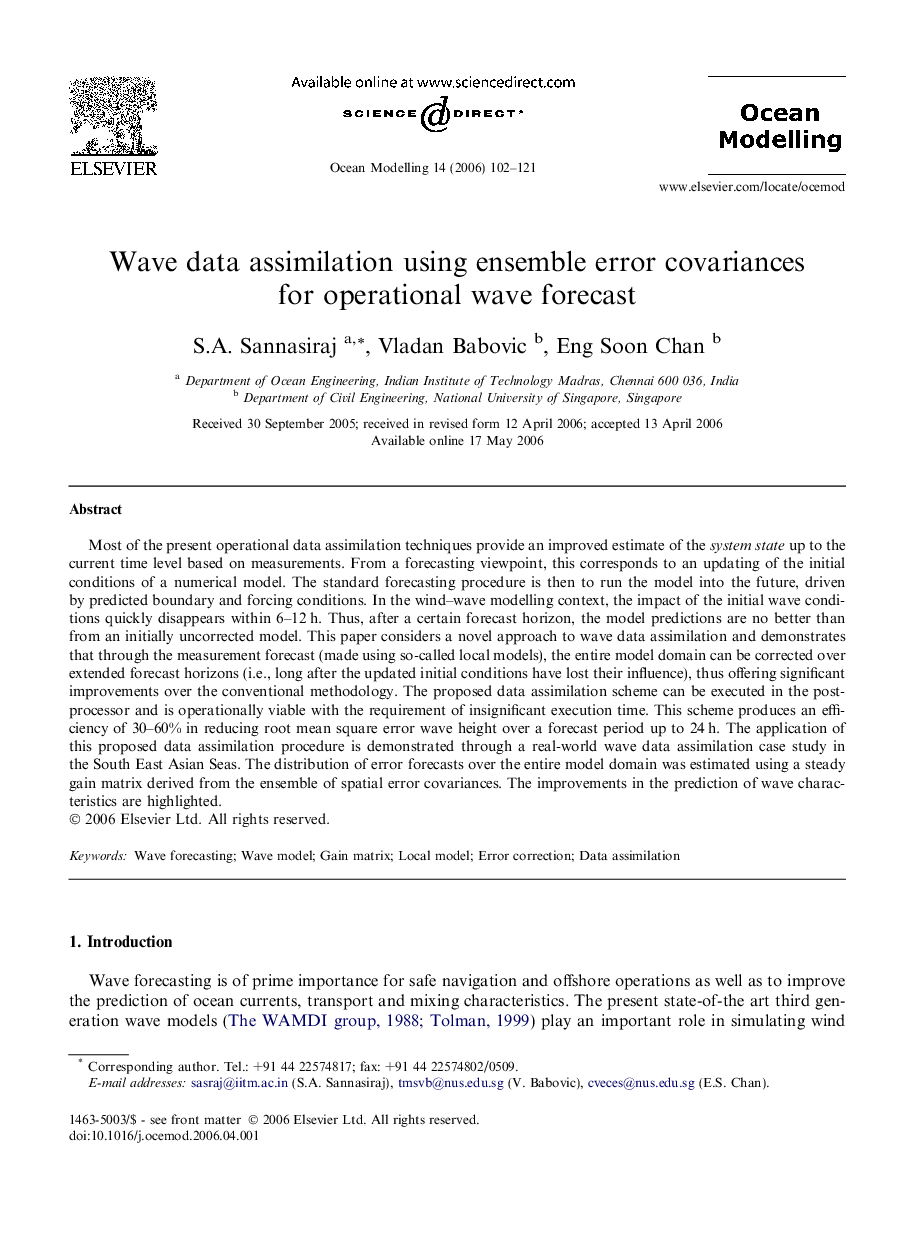| Article ID | Journal | Published Year | Pages | File Type |
|---|---|---|---|---|
| 4552793 | Ocean Modelling | 2006 | 20 Pages |
Most of the present operational data assimilation techniques provide an improved estimate of the system state up to the current time level based on measurements. From a forecasting viewpoint, this corresponds to an updating of the initial conditions of a numerical model. The standard forecasting procedure is then to run the model into the future, driven by predicted boundary and forcing conditions. In the wind–wave modelling context, the impact of the initial wave conditions quickly disappears within 6–12 h. Thus, after a certain forecast horizon, the model predictions are no better than from an initially uncorrected model. This paper considers a novel approach to wave data assimilation and demonstrates that through the measurement forecast (made using so-called local models), the entire model domain can be corrected over extended forecast horizons (i.e., long after the updated initial conditions have lost their influence), thus offering significant improvements over the conventional methodology. The proposed data assimilation scheme can be executed in the post-processor and is operationally viable with the requirement of insignificant execution time. This scheme produces an efficiency of 30–60% in reducing root mean square error wave height over a forecast period up to 24 h. The application of this proposed data assimilation procedure is demonstrated through a real-world wave data assimilation case study in the South East Asian Seas. The distribution of error forecasts over the entire model domain was estimated using a steady gain matrix derived from the ensemble of spatial error covariances. The improvements in the prediction of wave characteristics are highlighted.
